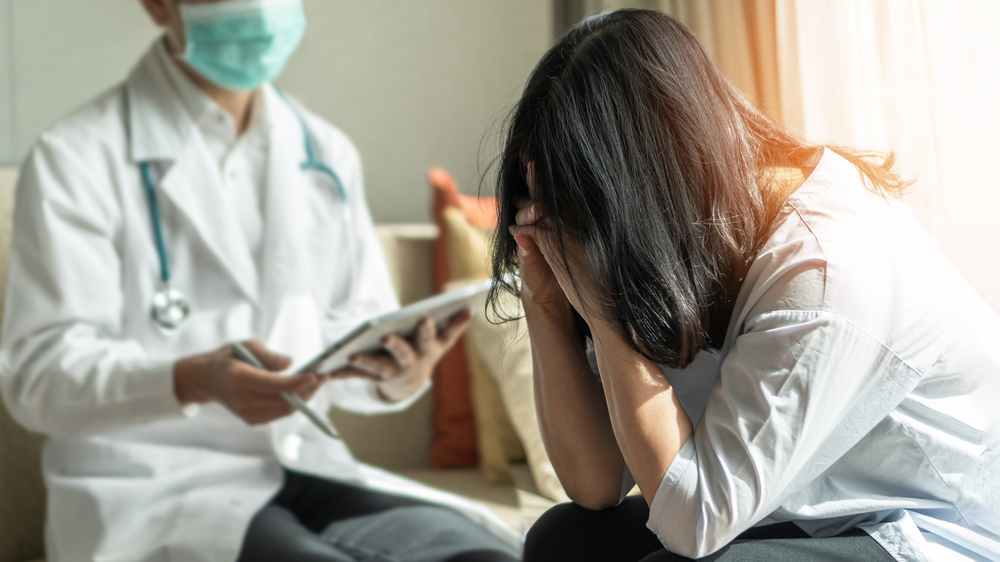
Post-traumatic stress disorder (PTSD): Symptoms & Causes
Introduction
Some people who have experienced or witnessed a traumatic event may acquire post-traumatic stress disorder (PTSD), a mental health disorder. Life-threatening traumatic events can include a battle, a natural disaster, a vehicle accident, or sexual assault. However, the situation may not always be dangerous. PTSD, for instance, can also be brought on by the abrupt, unexpected death of a loved one.
It's common to experience fear both during and after a distressing event. The "fight-or-flight" response is brought on by the dread. Your body uses this as a means of defending itself against potential injury. Your body changes, as a result, causing an increase in alertness, blood pressure, heart rate, and breathing as well as the production of specific hormones.
Most people bounce back from this organically over time. However, PTSD sufferers do not feel any better. Long after the trauma has passed, they continue to feel anxious and scared. The symptoms of PTSD might appear later. They may also appear and go over time.
PTSD Symptoms
Post-traumatic stress disorder symptoms can begin as soon as one month after a stressful experience, but they can also take years to manifest. (in a week or months usually within six months after a stressful experience. Significant issues are brought on by these symptoms in social, professional, and romantic ( family) interactions. They may also make it difficult for you to carry out regular activities as usual.
Intrusive memories, avoidance, unfavourable changes in thought and attitude, and changes in bodily and emotional reactions are the four main categories of PTSD symptoms. The severity of symptoms can change over time or from person to person.
Re-experiencing
The most prevalent symptom of PTSD is re-experiencing.
This occurs when a person uncontrollably and vividly recalls the terrible incident as:
- Nightmares
- Flashbacks
- Recurring, upsetting feelings or images
- Bodily reactions including shaking, sweating, nausea, or pain
Some people struggle to come to terms with their experience because they are always thinking negatively about it and posing difficult questions.
For instance, individuals can ponder why the incident occurred to them and whether there was anything they could have done to prevent it, which might result in feelings of guilt or shame.
Avoidance and numbing of the emotions
Another significant symptom of PTSD is attempting to forget the unpleasant incident.
This typically entails refraining from visiting or talking to anyone about the traumatic event-reminding places or individuals.
Many PTSD sufferers make an effort to block off thoughts of the incident by occupying themselves with work or hobbies.
Some people try to avoid feeling anything at all to cope with their emotions. We call this emotional numbness.
This may cause the person to retreat and become alone; they might also stop engaging in activities they once found enjoyable.
Hyperarousal (feeling "on edge")
A person with PTSD could experience extreme anxiety and have trouble unwinding. They might be always on the lookout for danger and easily startled.
Hyperarousal is the term for this emotional state.
Hyperarousal frequently causes: (Change the order)
- Sleeping problems (insomnia)
- Difficulty concentrating
- Irritability
- Angry outbursts may occur
Some other problems
Many persons who suffer from PTSD also struggle with a variety of other issues, such as:
- Various mental health issues, like phobias, anxiety, or sadness
- Self-destructive or harmful behaviour, such as abusing alcohol or drugs
- Other physical signs, including headaches, lightheadedness, chest pains, and stomachaches
Relationships and work-related issues can sometimes be exacerbated by PTSD.
Intensity of symptoms
The severity of PTSD symptoms might change over time. When you are generally stressed out or come across memories of what you went through, you may have greater PTSD distressing symptoms. For instance, you might hear a car backfire and remember a battle. Alternatively, you can be overtaken with recollections of your assault after seeing a news story about a sexual assault.
PTSD Causes
Alteration in neurotransmitters and neurohormonal functioning is among the most prominent cause of such conditions.
Everyone responds differently to distressing events. Each person has a different capacity for controlling anxiety, stress, and the threat posed by a traumatic incident or circumstance. Because of this, not everyone who experiences trauma will experience PTSD. The degree of support and care a person receives from friends, family, and specialists in the aftermath of the trauma may affect how quickly they develop PTSD or how severe their symptoms are.
Veterans of war were the ones who first brought PTSD to the attention of the medical profession, giving rise to the terms shell shock and battle fatigue syndrome. However, PTSD can appear in anyone who has experienced a terrible event. PTSD is more likely to occur in people who experienced abuse as children or who were frequently exposed to grave dangers. Those who have experienced physical or sexual assault are most at risk of developing PTSD.
You may be more likely to develop PTSD after a traumatic event if you have a history of other mental health problems, have blood relatives with mental health problems, or have a history of alcohol or drug abuse.
How widespread is PTSD?
A year's worth of PTSD affects around 5.2 million adult Americans or 3.6% of the population; 7.8 million Americans are predicted to experience PTSD at some point in their life. PTSD can appear at any age, even in infancy. PTSD is more common in women than in men

